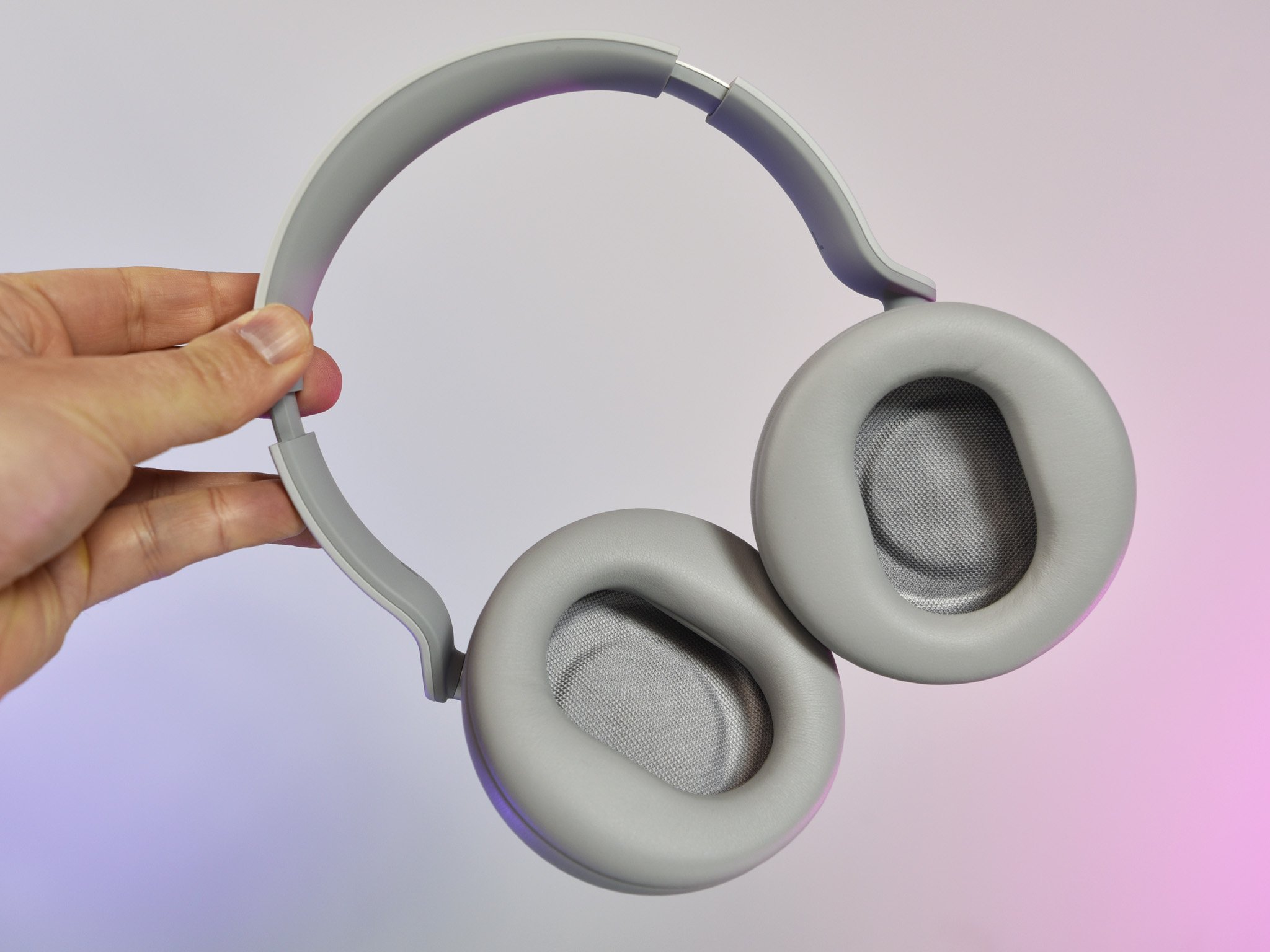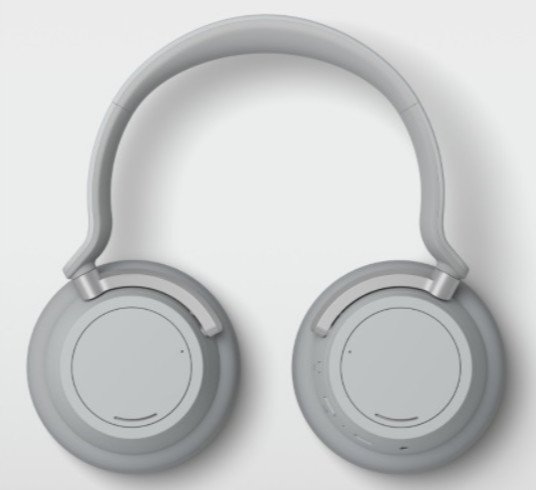The new Surface Headphones ($350) are an attempt by Microsoft to enter the hyper-competitive active noise cancellation (ANC) market of expensive, premium headphones. In some ways, it's an odd choice and yet the focus on productivity (Cortana), multiple Bluetooth pairings, design, comfort, and exceptional build quality are right in line with what the Surface team delivers.
But headphones — especially ones priced this high — do not exist in a vacuum. So, when compared to some of the best on the market right now including, the Bose QuietComfort 35 (Series II) and Sony WH-1000-XM3, it is surprising how good the Surface Headphones are.
Pros:
- First-rate audio
- Very comfortable
- Cortana works well
- Outstanding gestures and auto-pause
- Works with multiple Bluetooth devices
Cons:
- Noise cancellation is mediocre
- Battery life is short of the competition
- Large carrying case
Minimalist looks dominate
Surface Headphones design and features
The Surface engineering and design team nailed the looks and feel of Surface Headphones. The smooth platinum finish, large ear cushions and clean, minimalist look skillfully match the rest of the Surface line.
There are no visible screws or seems in the headband. Everything seems balanced with a focus on symmetry, and it makes the Surface Headphones simply stunning.
The matte platinum plastic is quality, and with only a few areas being metal (likely aluminum) the Surface Headphones weigh only 290 grams. That's heavier than Sony's WH-1000-XM3 (255 grams) and Bose's QC 35II (236 grams). The difference is hard to notice, though, when wearing the Surface Headphone, partially due to the ingenious engineering of the band, which spreads the weight uniformly. There's a nice arc right before the earcups on the band that likely offsets tension, as well.
Surface Headphones specs
| Category | Specification |
|---|---|
| Exterior dimensions | 8.03 in (204 mm) x 7.68 in (195 mm) x 1.89 in (48 mm) |
| Color | Platinum |
| Buttons | Mute, power, volume dial (right ear)Noise Cancellation dial (left ear)Touch interface on both earcups |
| Weight | 10.2 oz (290 g) |
| Frequency response | 20 to 20kHz |
| Noise cancellation | Up to 30 dB for active noise cancellationUp to 40 dB for passive noise cancellation |
| Speaker | 40mm Free Edge speaker |
| Sound pressure level output | Up to 115 dB (1kHz, 1Vrms via cable connector with power on)Up to 115 dB (1kHz, 0dBFS over Bluetooth connection) |
| Charging | Full charge in less than 2 hours |
| Battery | Up to 15 hours (music over Bluetooth, Active Noise Cancellation (ANC) on, Cortana on)Up to 50 hours (idle, Bluetooth off, ANC on) |
| Inputs | USB-C connector3.5mm audio connectorVoice Assistant Cortana by voice activation or touch |
| Compatibility | Windows 10iOSAndroidmacOS |
| In the box | Surface HeadphonesCarrying caseUSB cable (1.5M)Audio cable (1.2M)Quick start Guide, safety and warranty documents |
| Warranty | One-year limited hardware warranty |
The ear cups have substantial cushions when compared to Sony and Bose, which have ear cups with very similar designs. The Surface Headphones look more like an "o" for a shape versus a "0" for Bose and Sony. This design choice results in more padding behind and in front of the ear than the competition.
Under the band where it meets the skull apex, there is a decent amount of padding. While I didn't experience any head fatigue from the Surface Headphones, the Sonys feel a tad better for longer durations.
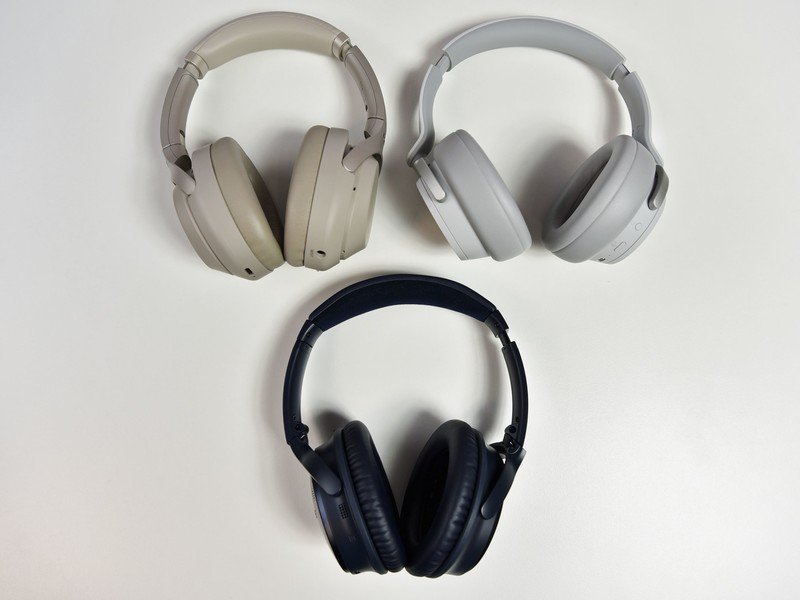
On the bottom right ear cup, you can find buttons for power and microphone muting. There's also a small white LED for charging status (blinking when charging, solid when charged), a USB Type-C port for fast charge, and a 3.5mm audio connector for those who want to use the headphones wired.
Pressing the power button for a second toggles the headphones on or off. Long-pressing for five seconds sets them to Bluetooth pairing mode. Holding the power button for 20 seconds will factory reset them. The mute microphone switch is self-explanatory, but I found the lack of any visible or audible feedback that the microphone was muted disconcerting.
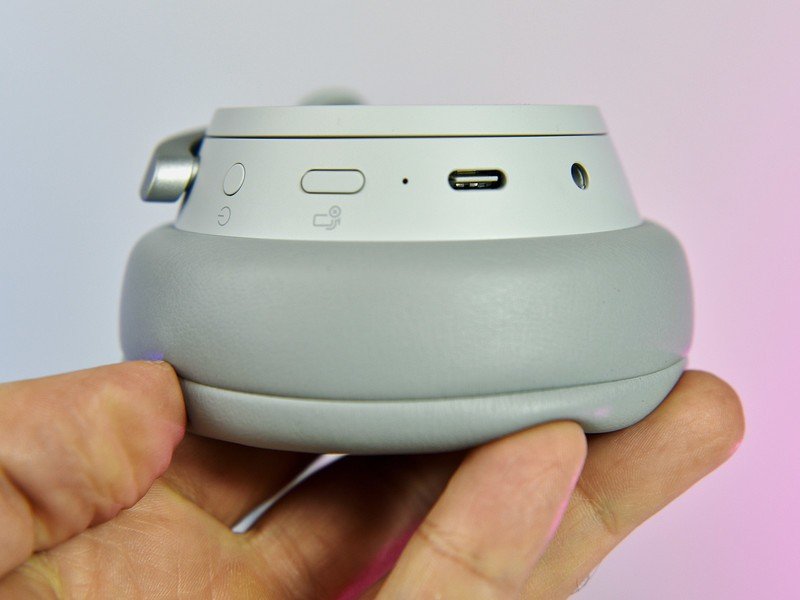
Those buttons and ports are all perfectly lined up along with an invisible line and evenly spaced.
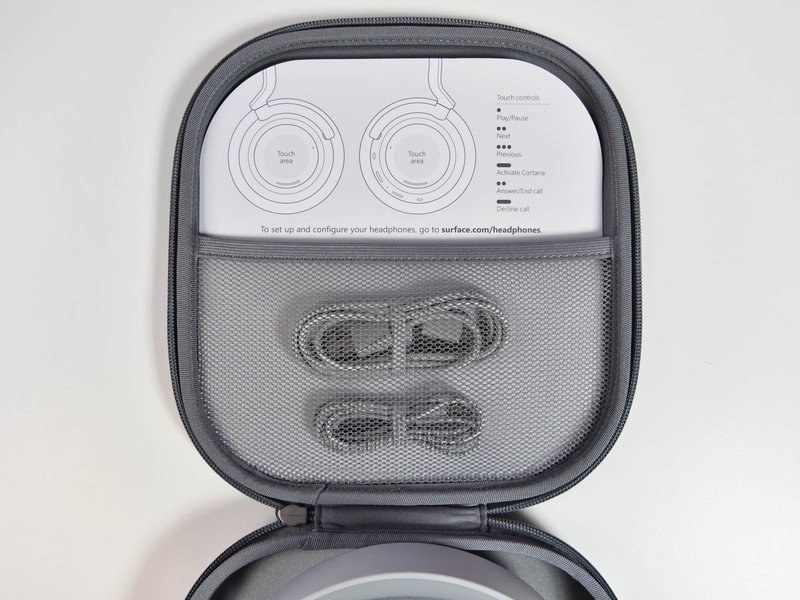
Surface Headphones auto-pause and gestures
There are a few distinct areas that separate Microsoft's headphones from the competition. One of those is the use of tapping either side of the capacitive ear cups for functionality. Here are the features:
- Short tap — Play/pause.
- Double tap — Next and Answer call.
- Triple tap — Previous.
- Long press — Activate Cortana or Decline call.
Surface Headphones are easily the most user-friendly headphones.
The right ear cup of the Surface Headphones acts like a giant volume knob. The left ear cup controls noise cancellation, giving users 13 different ambient sound levels. The execution of this is perfect. Surface Headphones are easily the most user-friendly headphones when compared to Sony and especially Bose. The dials are smooth, gentle, accurate and a joy to use versus physical buttons or using an app.
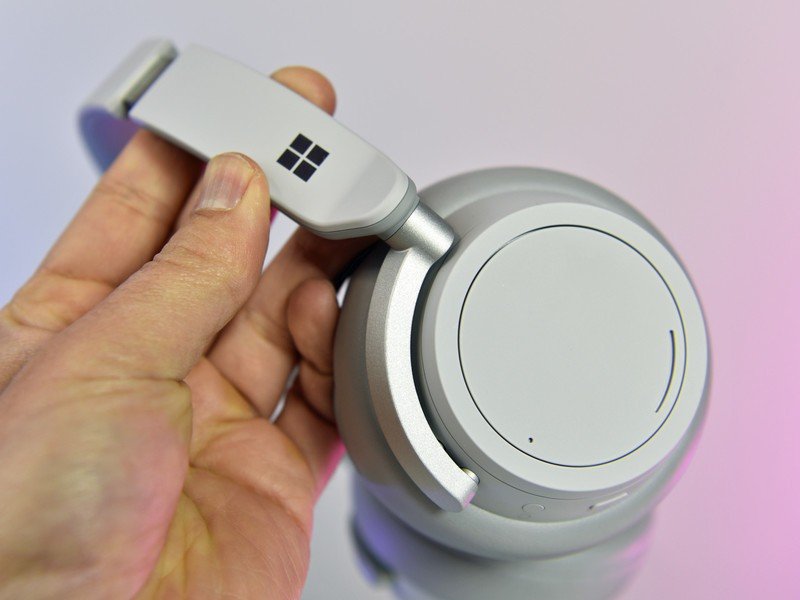
Another genius feature is auto-pause. When users take off the Surface Headphones or put them around their neck, the headphones pause whatever is playing through them whether, it's music or a movie on a PC.
The headphones also work wirelessly with Windows Sonic to give pseudo-surround-sound and spatial effects. Auto-pause without a hitch.
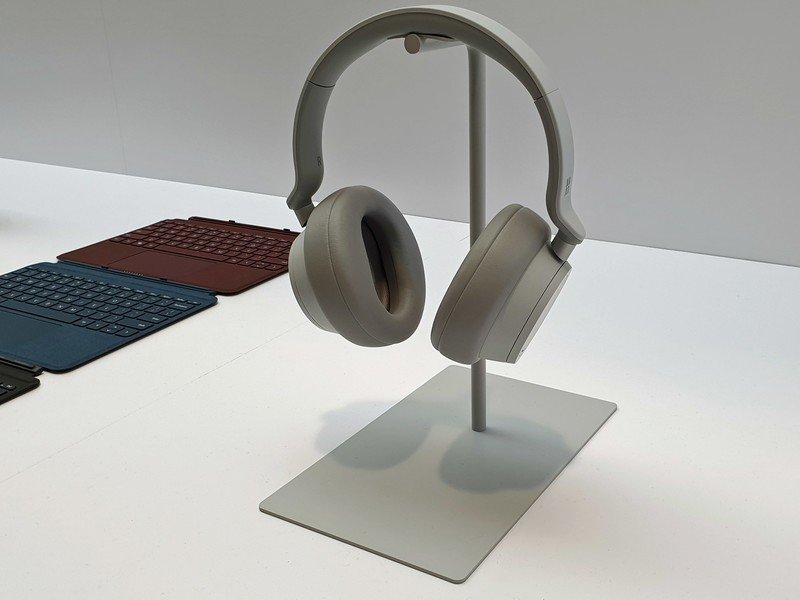
The power of voice
Surface Headphones brings Cortana
Cortana is front and center with Surface Headphones. From the moment you first turn them on and set them up, Microsoft's digital assistant is foundational.
Surface Headphones bring some serious innovation to the table.
Those on iOS and Android can use the new Cortana 3.0 app to set up, control, update, and configure the headphones. For Windows 10 users, Cortana is built into the OS and uses the same process for setting up and configuration, which is simple.
A long-press can activate Cortana through Surface Headphones on the ear cup or merely saying "Hey, Cortana." This capability works on iOS to activate Cortana, which for the first time, gives users a more natural ability to rely on the assistant over Apple's Siri. Microsoft notes, however, that Cortana and iOS still work best together when the Cortana app is open.
Various voice commands give Cortana a lot of punch for these headphones, such as:
- Dictate and send email or SMS on Android or iOS.
- Get latest calendar appointments or status.
- Open Amazon Alexa (PC only).
- Open a playlist on Spotify (coming to iOS soon).
- Control music.
- Ask about weather, trivia, conversions, general information, etc.
Those using Android will get a richer experience than on iOS because Cortana on Android can be set as a default assistant.
The Cortana app also lets you configure a five-band equalizer (EQ) with presets for flat, classical, jazz, pop, and rock. Users can customize those EQ settings and save and name as many presets as they wish.
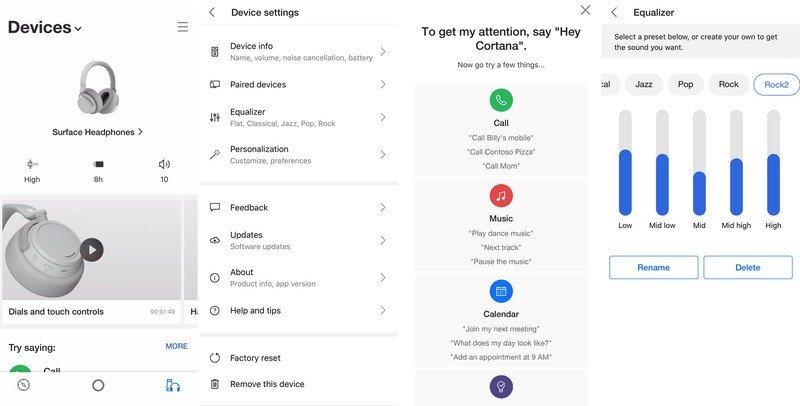
While there are currently no firmware updates available for Surface Headphones, it is through Cortana on iOS, Android, or PC that users can check for and install these feature and bug-fixing updates.
Cortana works quite well on the Surface Headphones and is especially useful for those who plan on using them with a PC, where Cortana can do much more compared to Alexa, Google Assistant, or Siri, which have no presence or abilities.
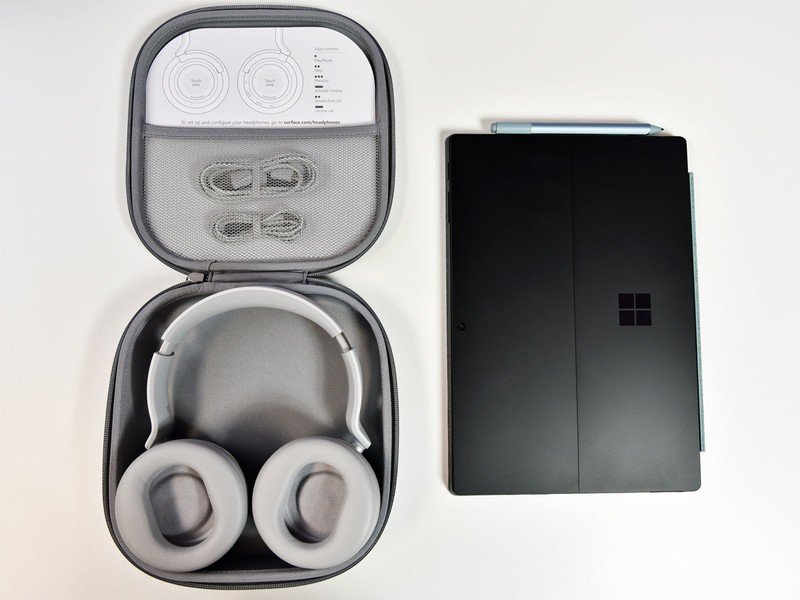
Good news, not-great news
Surface Headphones audio and noise-canceling
Audio quality when playing music, listening to movies, or during a Skype call is brilliant on the Surface Headphones. Microsoft has always had a knack for audio as Surface Pro and Surface Laptop demonstrate. That carries over to the Surface Headphones, which are a delight to use for music or movies.
By contrast, Bose QuietComfort 35 (Series II) sound flat and hollow (the lack of EQ does not help). Compared to the excellent Sony WH-1000-XM3s, the Surface Headphones sound very similar. Music is rich, full-bodied with bass, and it has a remarkable fidelity. Sony has a few more software tricks up its sleeve, but Microsoft managed to create outstanding headphones that can go up against others in this class.
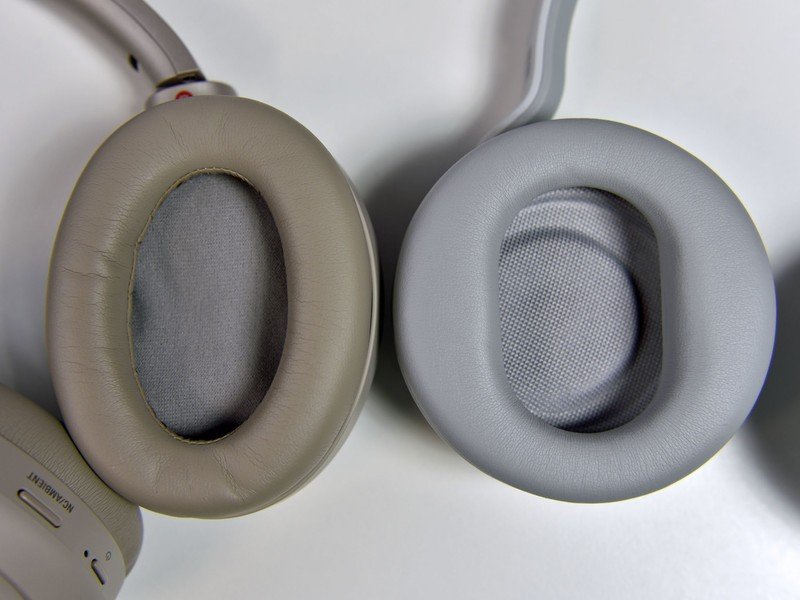
However, things shift when it comes to Active Noise Cancellation (ANC). Microsoft notes that the Surface Headphones have four beamforming microphones with four additional microphones to deliver 13 levels of ambient noise cancellation, and it all works. But it is not as good as Bose, and neither are as terrific as Sony.
What is active noise cancellation and how does it work in headphones?
The Surface Headphones, when set to max ANC, tend to have a bit of a background hiss to them versus the near dead-silence provided by the Sony WH-1000-XM3. It's noticeable on their own but more so when you compare directly.
Music is rich, full-bodied, and it has remarkable fidelity.
Outside wind noise is better than the Bose, which are terrible, but again Sony has better-recessed microphones to help prevent wind interference.
The same goes for public areas with lots of people talking and background noise. The Surface Headphones reduce that noise, and the ability to "dial it in" with fine granular control is amazing (most ANC headphones are "max" or just on or off for control). But compared to Sony and even Bose the Surface Headphones fall short for noise cancellation.
Perhaps it is unrealistic to assume that Microsoft could beat either Bose or Sony on version 1.0; after all, both companies have been doing this research for years. The fact remains though that while the Surface Headphones are still very good, the Sony WH-1000-XM3 are the champs against noise.
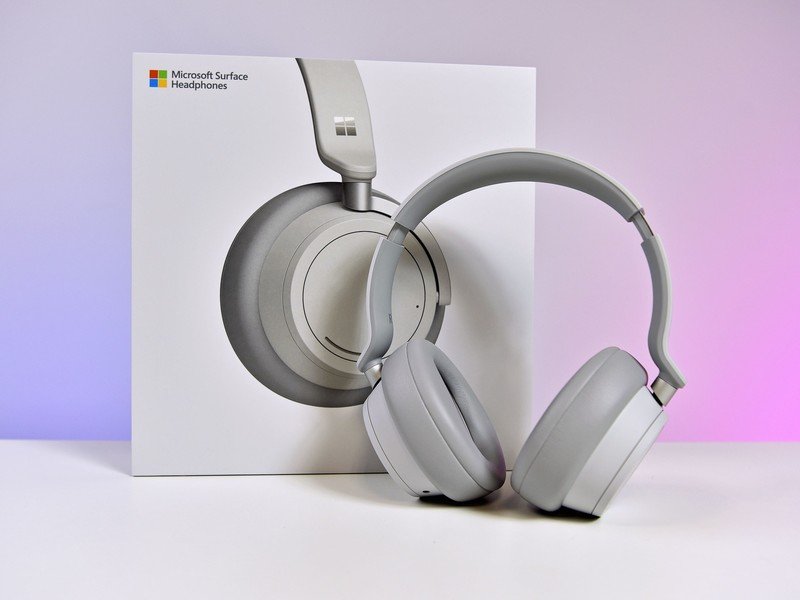
Better than expected
Bottom line on Microsoft's Surface Headphones
Going up against Sony and Bose and expecting to win against either in a battle for headphones is an insane challenge. And perhaps Microsoft doesn't need to win, as long as it pushes the genre forward with creativity.
From that latter perspective, Microsoft accomplished a lot. Audio quality compared to other popular brands at this price point is as good as Sony and better than Bose. One key takeaway is Microsoft made Bose look bad with its dated micro USB port, physical keys, and mediocre sound profile on the QC 35IIs.
Comfort, design, auto-pause and gesture controls are all marvelous with the Surface Headphones.
Surface Headphones trounce the best from Bose in almost all areas.
Where Surface Headphones stagger is noise cancellation and battery life. Both are satisfactory, but not amazing. Bose estimates around 20 hours of battery life and Sony pushes 30. Surface Headphones are supposed to get 15 hours, but it's more like 11 or 12 hours in my experience. The Type-C fast charge helps and is very convenient for those who live the Type-C tech life, but these will need charging more frequently.
Noise cancellation is as much art as it is science. While Sony is now considered the best, it took the company years of trying — and failing — to beat Bose. It finally did but only in September 2018 with the new WH-1000-XM3. Microsoft still has some room to grow, but if we were expecting any amazing advancements with this technology, it is not evident with this release. Perhaps some software tweaking will change that, though.
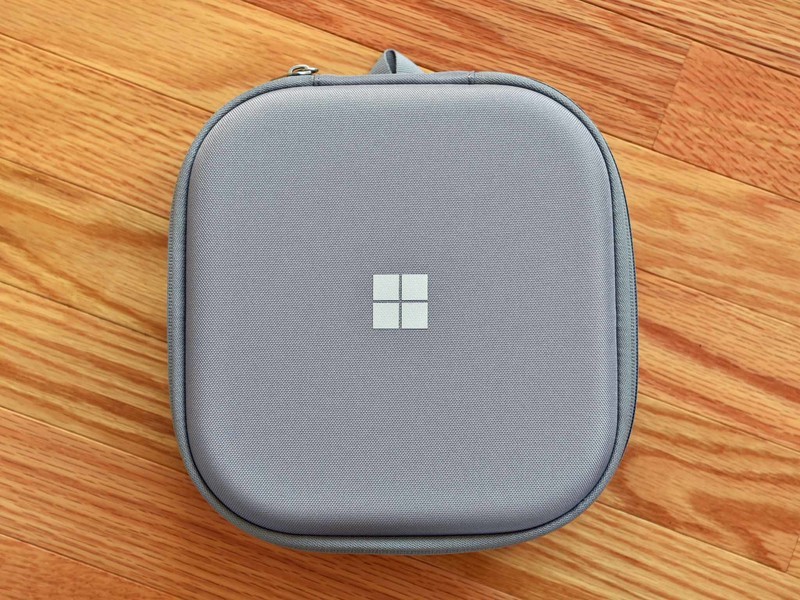
So, who should buy the Surface Headphones? Anyone who works behind a computer (Mac or PC) and who wants to switch to their smartphone without fiddling dynamically. The Surface Headphones are great for listening to music on PC, taking a call on an iPhone, and then going right back to work. Bose can do this as well, but Sony's pair with only one device.
There is also the case for those who like using Cortana on PC or smartphones. If you do, then these are a no-brainer. Neither Bose nor Sony works with Cortana.
There are also just fans of Surface PCs who want premium headphones to match the experience. That may sound trivial, but it works for Apple, and there's no reason to dismiss such a loyal audience. And the Surface Headphones look gorgeous next to a Surface PC.
4.5 out of 5
Microsoft brought serious innovation to the table with Surface Headphones. It still has room to improve, but the company has established that it can offer some genuine competition to Bose and Sony. Surface Headphones 2 should be very exciting. For now, this first release is above average ... but not the best.
